The Val d’Orcia is a ravishing rural area running into le Crete Senesi, but within sight of hulking Monte Amiata. For many, this is the loveliest area in Tuscany, with Unesco-listed countryside, perfect hilltop villages, remote abbeys and evocative castles. Foodies, walkers and spa-lovers will take to the thermal spas, rustic inns, myriad wine trails and meditative walks. The Val d’Orcia represents quintessential Tuscany, with clusters of cypresses, ribbons of plane trees, vineyards on the slopes, and farms perched on limestone ridges. But it was not this alone that won the area Unesco World Heritage status – it’s also about the harmony between the Tuscans and their landscape, shaped by their mellow way of life. Once depopulated, these medieval villages are now enjoying a belated renaissance. San Quirico d’Orcia may be the gateway to the area but Montalcino, Pienza and Montepulciano also make delightful stepping-stones to scenery landscaped since time immemorial.
Val d'Orcia
-
-
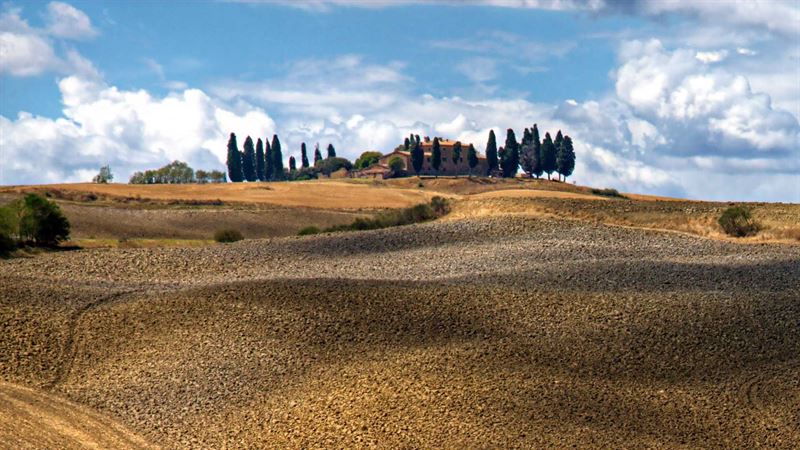
Top Ten Things to Do
These are our Top Ten Things to Do, from gentle drives to soporific spas, from strolls in moody hamlets to medieval abbeys and the vintage Nature Train – all set in Unesco-listed countryside.
-
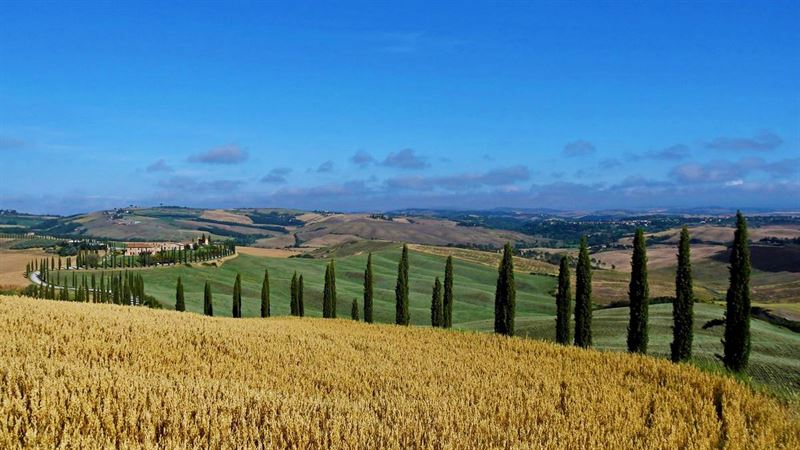
1. Val d’Orcia drive
A circular tour sweeps past medieval villages, cypress groves, Romanesque churches, and hills topped by craggy castles or isolated farmhouses. Medieval insecurity accounts for the cluster of castles built to watch over the Orcia valley. A drive linking the hill-top hamlets runs from San Quirico d’Orcia to Rocca d’Orcia and Castiglione d’Orcia south to Vivo d’Orcia and Campiglia d’Orcia. Both hilltop Castiglione and Rocca d’Orcia boast medieval castles which survey the valley, down to the tiny spa resort of Bagno Vignoni. Views abound, taking in Monte Amiata and even the mountains around Abetone. If lucky, you’ll catch the summer Val d’Orcia Festival (July-August) which showcases music, dance and cinema in castles, churches and spa resorts.
-
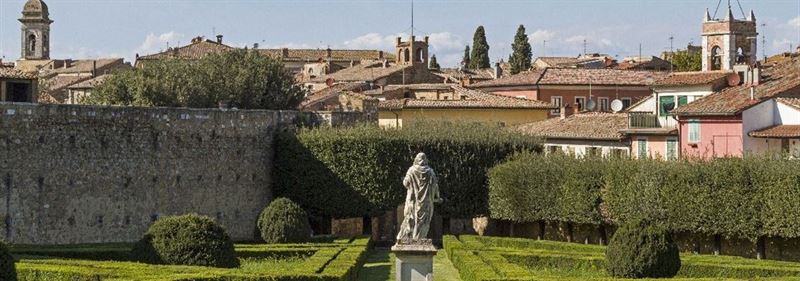
2. Val d’Orcia villages
The Val d’Orcia villages mostly retain their medieval street plan and proud urban spirit, a sense of communal pride at odds with their current status as glorified hamlets. Dignified San Quirico is home to a Romanesque parish church made from sandstone and local travertine, with three remarkable portals and columns supported by two stony lionesses. Its adjacent park, the Horti Leonini, represents classical Italian gardens, complete with geometrical beds. Rocca d’Orcia, a fortified village once owned by the warring Salimbeni clan, has a bold castle, where St Catherine of Siena learnt to read and write. A cypress-clad avenue leads upto the castle, perched on a rocky crag. Castiglione d’Orcia, the last significant settlement before Monte Amiata, is a wellpreserved village, with a ruined fortress and expansive views back towards Rocca d’Orcia. A peaceful stroll around the 15th-century hamlet winds back to charming Piazza Il Vecchietta, complete with its photogenic travertine fountain.
-
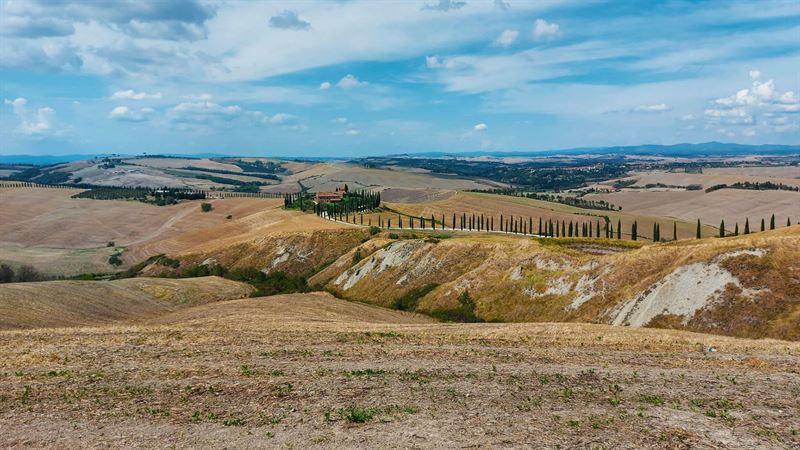
3. Le Crete Senesi drive
Stretching from Siena to Montepulciano is an otherworldly moonscape known as Le Crete Senesi, the strange clay hillocks and crater-like gullies marking the Sienese badlands. Barren or virtually treeless, this is beguiling territory, with striking farmhouses marooned on the crests of hills. This is one of Tuscany’s great drives, an antidote to gentle Tuscany, softened by olives and vines. The best route through the Crete is the SS438 to Asciano, and the SP451 to Monte Oliveto Maggiore – empty roads through a barren landscape, dotted with lone cypresses. Known as the Accona desert in medieval times, this area retains its spiritual remoteness.
-
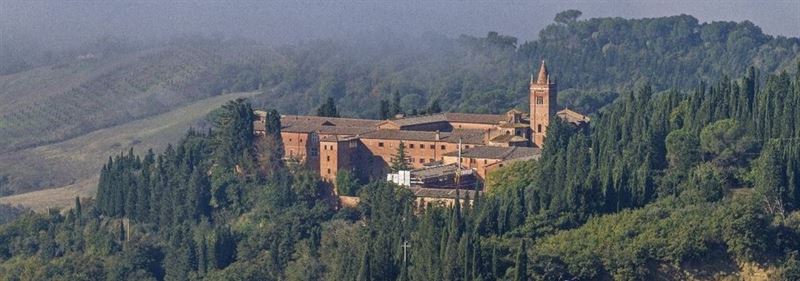
4. Monte Oliveto Maggiore visit
This wonderful working abbey is the perfect stopping point on the magical Crete Senesi route (see above). Founded in 1319, Monte Oliveto is one of the most mystical spots in Tuscany, half-hidden in the woods. The Olivetan monks live under Benedictine rule and still follow St Benedict’s precept that “a real monk is one who lives by his own labour,” and so produce their own liqueurs, wine and oil. The main cloister is covered in memorable frescoes depicting the Life of St Benedict, begun by Luca Signorelli in 1495 and completed by Sodoma from 1505. Sodoma's frescoes are exuberant and uninhibited, playfully focusing on such details as a mischievous smile or a soldier's perky buttocks.
Web: www.monteolivetomaggiore.it -
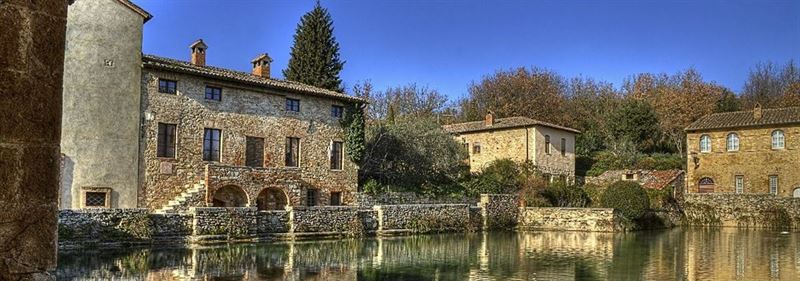
5. Bagno Vignoni mooch
Bagno Vignoni is more about a lingering, wistful mood than about a series of must-see sights. Just south of San Quirico, off the SS2, this tiny, atmospheric spa resort is very much on the tourist trail so is often most charming slightly out of season. Yet even in the height of summer, it doesn’t disappoint, with its steamy hot springs and unforgettable central square, centred on monumental baths. Both St Catherine of Siena and Lorenzo de Medici once bathed in the sulphurous waters of this stone pool. You can’t swim there but lap up the nostalgic mood in a café adjoining the main square before joining the classic passeggiata (stroll) and then sipping cocktails at Il Barrino lounge bar (Via Ara Urcea 43).
Web: www.termedibagnovignoni.it/en/index.html -
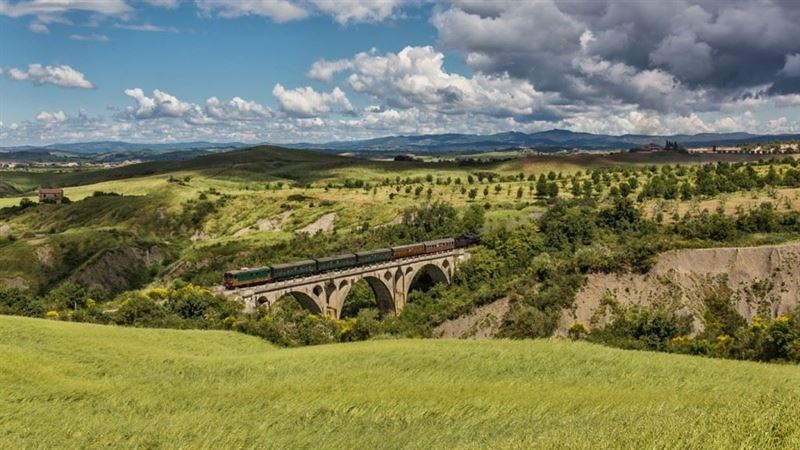
6. Nature Train ride
This is a superb way of taking in the Tuscan landscape and lifestyle, often with a traditional market or quirky food festival as the highlight. For many, it’s already a highlight to ride on an old steam train through Unesco-heritage landscape of Val d’Orcia. The vintage (or steam) train service runs from March to December and takes in the best of Siena province – the Val d’Orcia, the Crete Senesi and Monte Amiata. Wherever possible, the journey is linked to a local festival or food fair, such as the spring wine fair or autumn mushroom festival in Castiglione d’Orcia. Our favourite trips include the Etruscan tour to Chiusi; the Siena main market; the Montalcino Brunello wine fair, the San Quirico oil fair and the San Giovanni d’Asso truffle fair. Try and book before your holiday as it’s extremely popular with locals too.
Web: https://www.ferrovieturistiche.it/en/ -
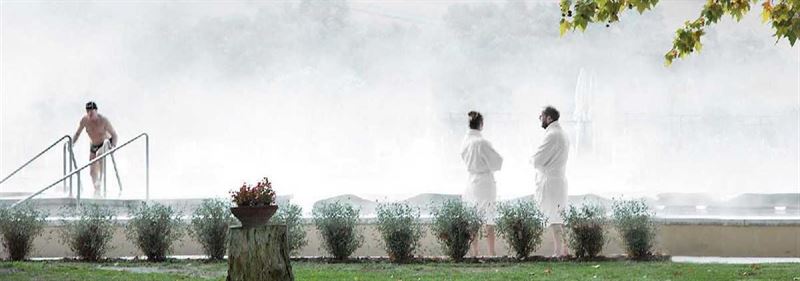
7. Bagno Vignoni spa under the stars
This can either be a romantic treat or a fun, family evening out and makes up for your not being able to wallow in the Bagno Vignoni monumental baths. In summer, the Marcucci opens its spa at night, pools dominated by the floodlit Rocca d’Orcia castle above. Let yourself drift back to Etruscan times. Crickets chirp in the background while the steam rises in the pool. The softness of the hot, chalky water dissolves tiredness and the smell of sulphur evaporates into the night air.
Terme Posta Marcucci: spa open all year but spa under the stars only available in summer -
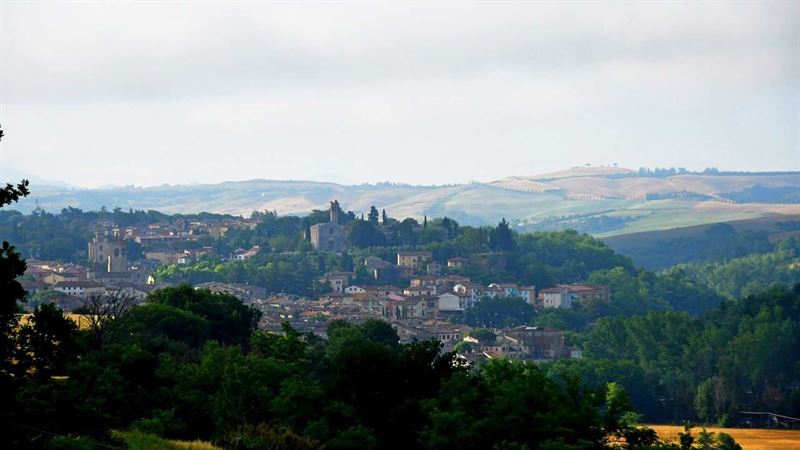
8. Asciano arty visit
Asciano is an underrated town and a slow burn, full of the minor cultural gems that make Tuscany so special. Consider calling into Asciano while exploring the Crete Senesi route (see above). This seemingly unremarkable town reveals a cluster of so-called minor but magical museums, of which the best is the Museo d’Arte Sacra, a treasury of Sienese art. Lunch in a local inn and be sure to try the pungent local cheese, pecorino delle crete senesi. Best of all, visit Asciano on the Nature Train (see above). The train is timed to coincide with a lively market selling local honey and pecorino cheese from the Crete area and Pienza, or chestnuts from Monte Amiata.
-
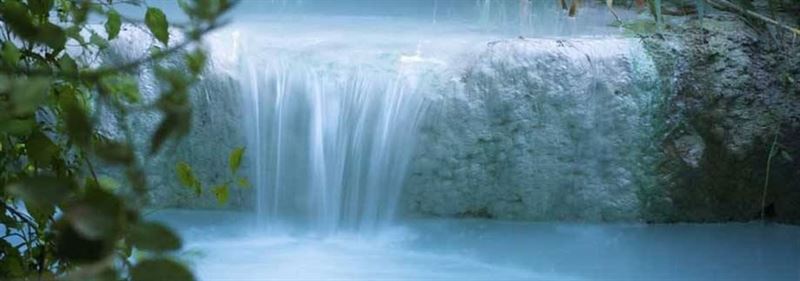
9. Terme San Filippo day spa
Just south of Campiglia d’Orcia, and 60 kilometres south of Siena, this is a delightful, time-warp spa that works. The affordable thermal spa provides restorative waters, as well as massage and mud treatments. The highlight is the spa’s soothing thermal pool and the chance to chat to friendly locals under the fierce-flowing waterfalls. The spa is open to non-residents and also has a decent trattoria serving hearty Tuscan cuisine. It’s inexpensive but if you want free and wild, follow signs to Fosso Bianco, where hot springs merge with pools and a waterfall in the wild.
Web: www.bagnisanfilippoterme.it -
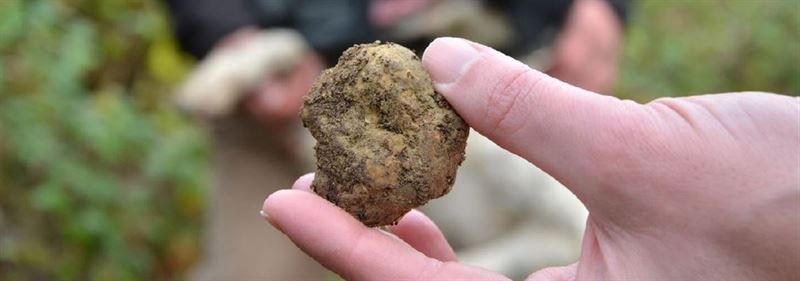
10. San Giovanni d’Asso truffles
Set north of San Quirico d’Orcia, San Giovanni d’Asso comes to life during the truffle season. Time a visit to an autumn truffle fair and then visit the castle, truffle museum and the truffle market. During the autumn white truffle season, one special Nature Train travels round the Crete moonscape, delivering train-spotting truffle-hounds to San Giovanni d’Asso, culminating in a truffle-tasting over lunch. Only in Tuscany.
Web: www.cittadeltartufo.com/item/san-giovanni-dasso/ -
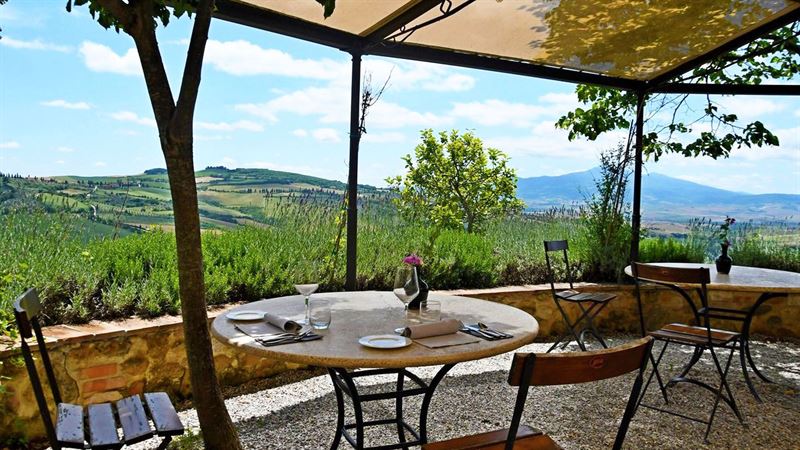
Eating and Drinking
The charming Val d’Orcia villages abound in family-run inns and bars in atmospheric settings. The best inns offer Slow Food ingredients, such as prosciutto di cinta senese (cured meat made from an acorn-snuffling, wild-boar-like breed of Sienese pig). Salami are on the menu everywhere, maybe flavoured with wild fennel. This is Sienese territory so expect the stubby pasta known as pici, in every kind of sauce, including game. In autumn, mushroom and chestnut dishes are on the menu, a reminder that the fertile slopes of Monte Amiata are not far away. As for dessert, look out for ricciarelli, Sienese biscuits, tasty, lozenge-shaped almond and candied orange-peel biscuits, a variant on macaroons. These may be served with Vin Santo, Tuscany’s celebrated dessert wine.
-
Osteria del Leone
This cosy village inn is as photogenic as its Bagno Vignoni setting. Enjoy traditional Tuscan cooking on the summery terrace or in the quaint, rustic-elegant dining room. First courses (primi) include pasta dishes such as pici alle briciole (stubby spaghetti-like pasta in bread sauce). Also on the menu are stuffed artichokes, local meat and game, including wild boar and rabbit.
Address: Via dei Mulini 3, 53027 Bagno Vignoni
Tel: +39 0577 887300
Web: www.osteriadelleone.it -
Trattoria Osenna
This popular, old-fashioned, family-run trattoria has a summery, wisteria-hung terrace and rustic dining room. The specialities are the family’s home-cured salami and the pasta with myriad sauces, served with pici or tagliatelle. The wild boar stew is as highly-rated as the locally-produced wines.
Address: Via Dante Alighieri 42, 53027 San Quirico d’Orcia
Tel: +39 0577 897541
Web: www.trattoriaosenna.com -
Ristorante San Filippo Delitti
This reliable, inexpensive spa restaurant is open to all, even if you could also dine after a soothing swim in the thermal baths (April onwards). Come for hearty Tuscan cooking, home-made pasta, tasty meats and a local cheeseboard, The wine list features Brunello di Montalcino, Nobile di Montepulciano, Chianti and Morellino, along with up-and-coming wines from Val d’Orcia and Montecucco.
Address: Terme di San Filippo, Via San Filippo 23, 53023 Bagni San Filippo
Tel: +39 0577 872982
Web: www.termesanfilippo.com -
La Torre di Monte Oliveto
This touristy but surprisingly decent trattoria is just beyond the main gate of the Monte Oliveto Benedictine abbey. Set in a tower but spilling out onto a sheltered courtyard, this popular place serves rustic Tuscan treats from cold cuts and crostini slathered in olive oil paste to filling ribollita soup, Tuscan pecorino cheese and succulent grilled meats.
Address: Localita di Monte Oliveto Maggiore, 53020 Asciano
Tel: +39 0577 707022 -
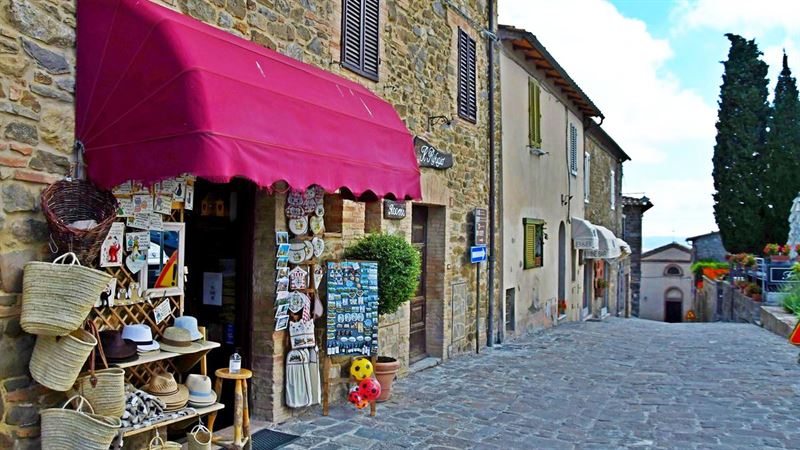
Shopping
The Val d’Orcia is a foodie hotspot so shopping often focuses on edible produce, including speciality foodstuffs that can be taken home or, more likely, devoured in your villa. Expect to be waylaid by tempting small cheese shops, wine-producers and enoteche (wine bars that may double up as wine shops) especially around Pienza. Stock up on local Rosso d’Orcia to quaff overlooking your Tuscan pool, as well as virtually local Vino Nobile di Montepulciano and full-bodied Bruncello di Montalcino. Speciality food shops often follow the seasons in displaying the best mushrooms (funghi porcini), chestnuts and truffles, along with saffron, olive oil and local cheeses. Allow yourself to be tempted by pecorino (sheep’s milk) cheese, whether sold by Pienza cheesemakers or even local Sardinian peasants.
-
Abbazia Monte Oliveto Maggiore & Azienda Agricola
Monte Oliveto Maggiore is the most engaging spot for shopping, whether in the abbey complex itself or via the abbey farm, the Azienda Agricola, also run by white-clad Benedictines. The abbey complex is home to a herbalist’s, selling everything from organic soaps and beauty creams to herbal teas and liturgical music. Call into the Cantina Storica for a free wine-tasting tour of the historic cellars in the abbey complex. Instead, contact the Benedictines’ farm shop or order online for monastic liqueurs, notably Flora di Monteoliveto, along with grappa, wine, olive oil, chickpeas and spelt.
Web: www.monteolivetomaggiore.it -
Librorcia Bagno Vignoni
Is a cosy bookshop with a friendly owner plenty of books in both Italian and English, including guides.
Address: Via delle Sorgenti 38, 53027 Bagno Vignoni (SI)
Web: www.librorcia.com -
Parking & Getting Around
This is one of Tuscany’s loveliest areas and to be savoured slowly. The winding roads are designed for drama not speed, even if its beauty makes it the classic route for Ferrari fans out to impress. For remote beauty, we single out the Crete Senesi routes (the SS438 to Asciano, and the SP451 to Monte Oliveto Maggiore) and any gentle meanderings between the villages of Castiglione d’Orcia, Vivo d’Orcia and Campiglio d’Orcia, with views of ruined fortresses at every turn. The route south to Monte Amiata and Roccalbenga is also scenic, as are the routes north to Montalcino, Pienza and Montepulciano. Towards Monte Amiata, the mountain roads are tortuous but beautiful.
Parking is tricky in summer in Bagno Vignoni but you can park just outside the village at the crossroads with the Via Cassia and then walk into the centre.

























